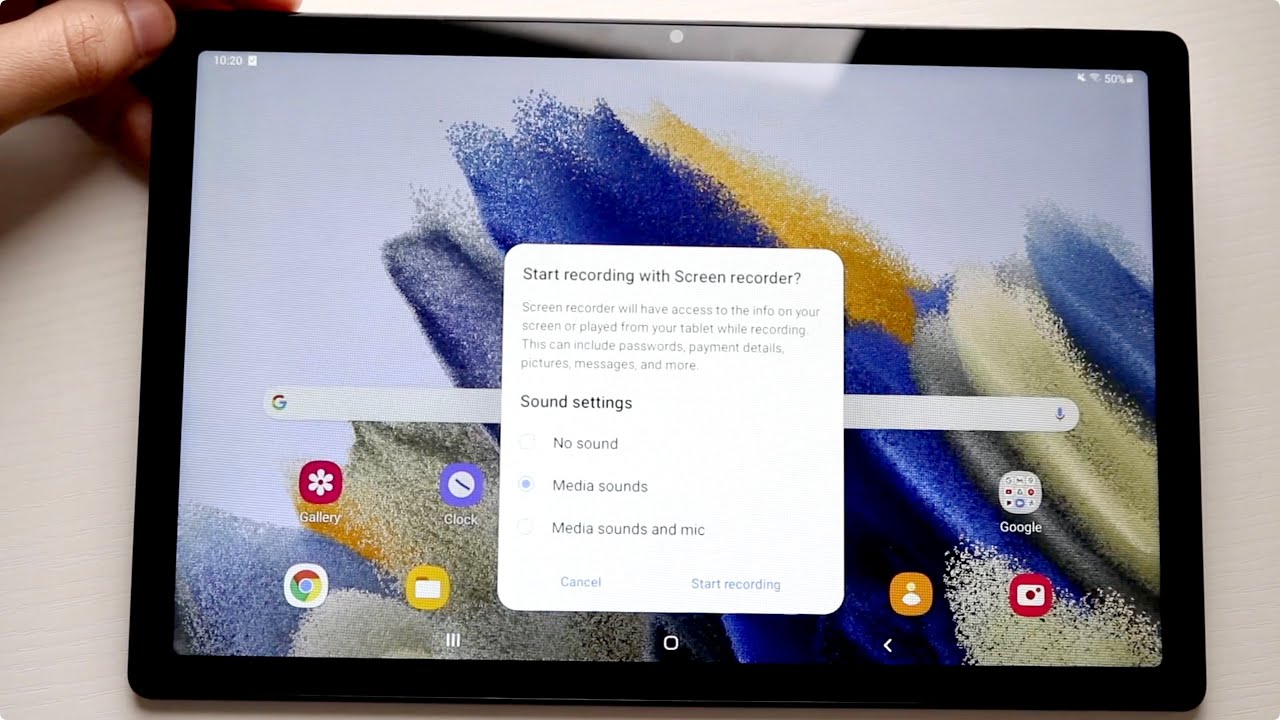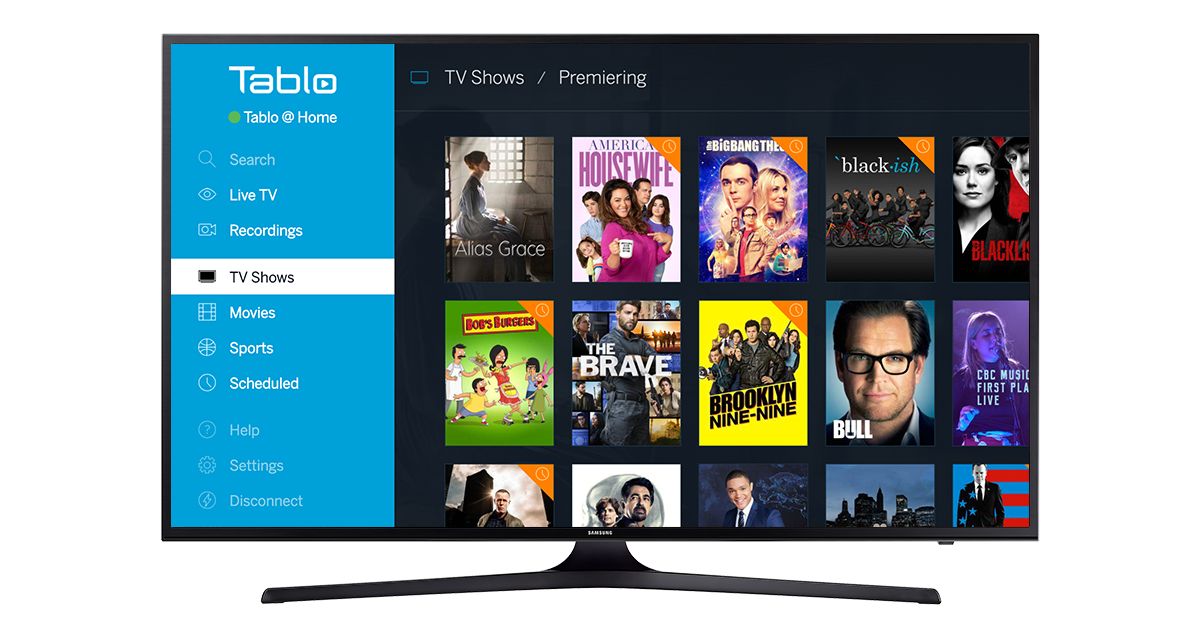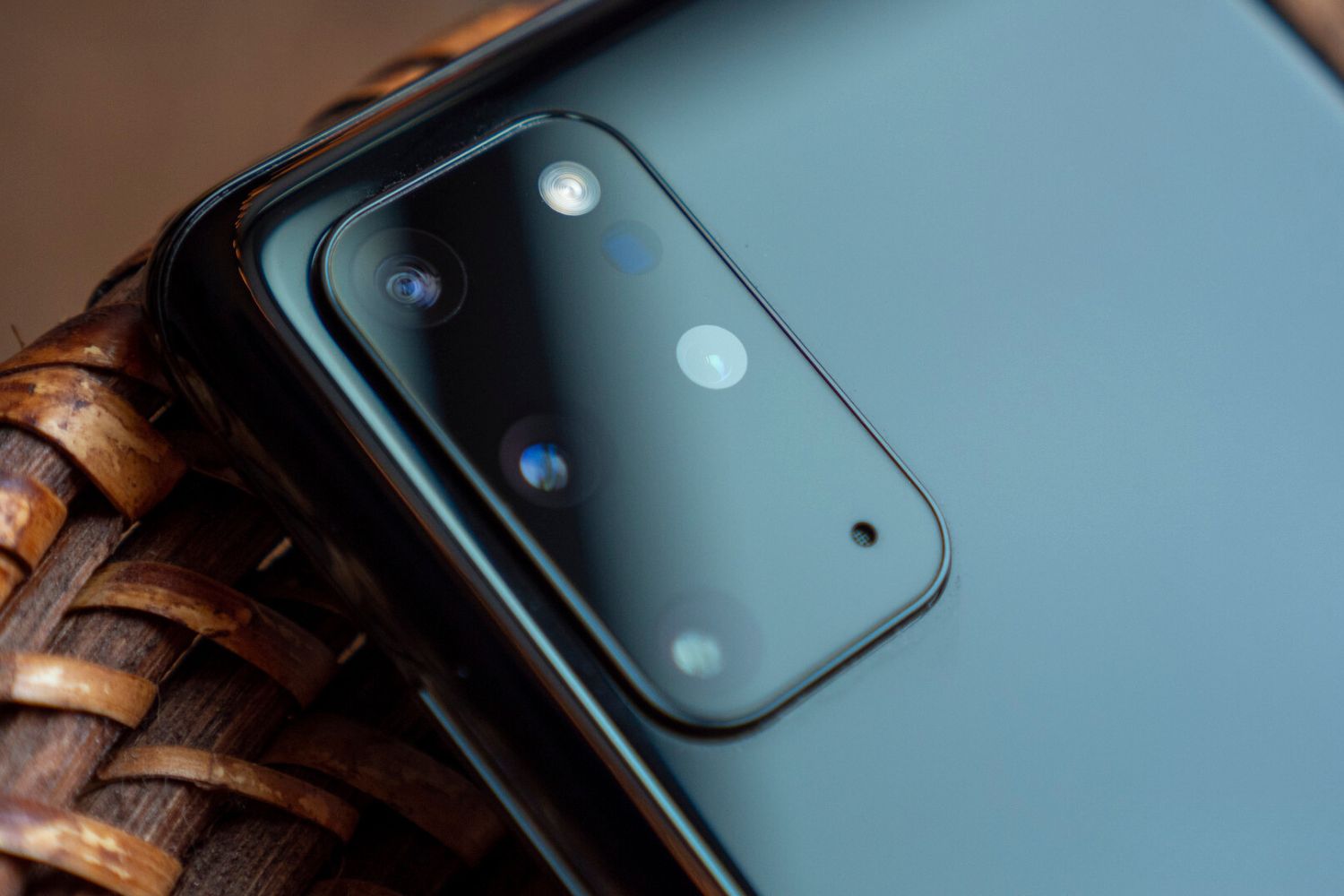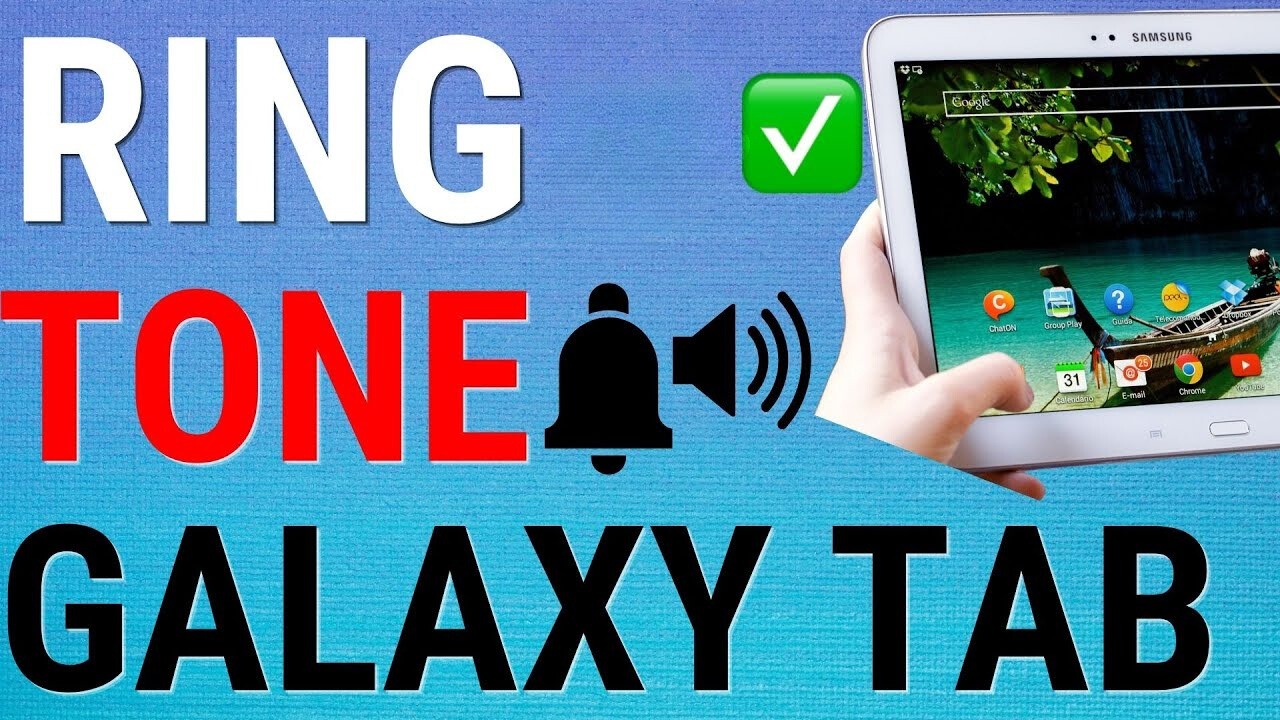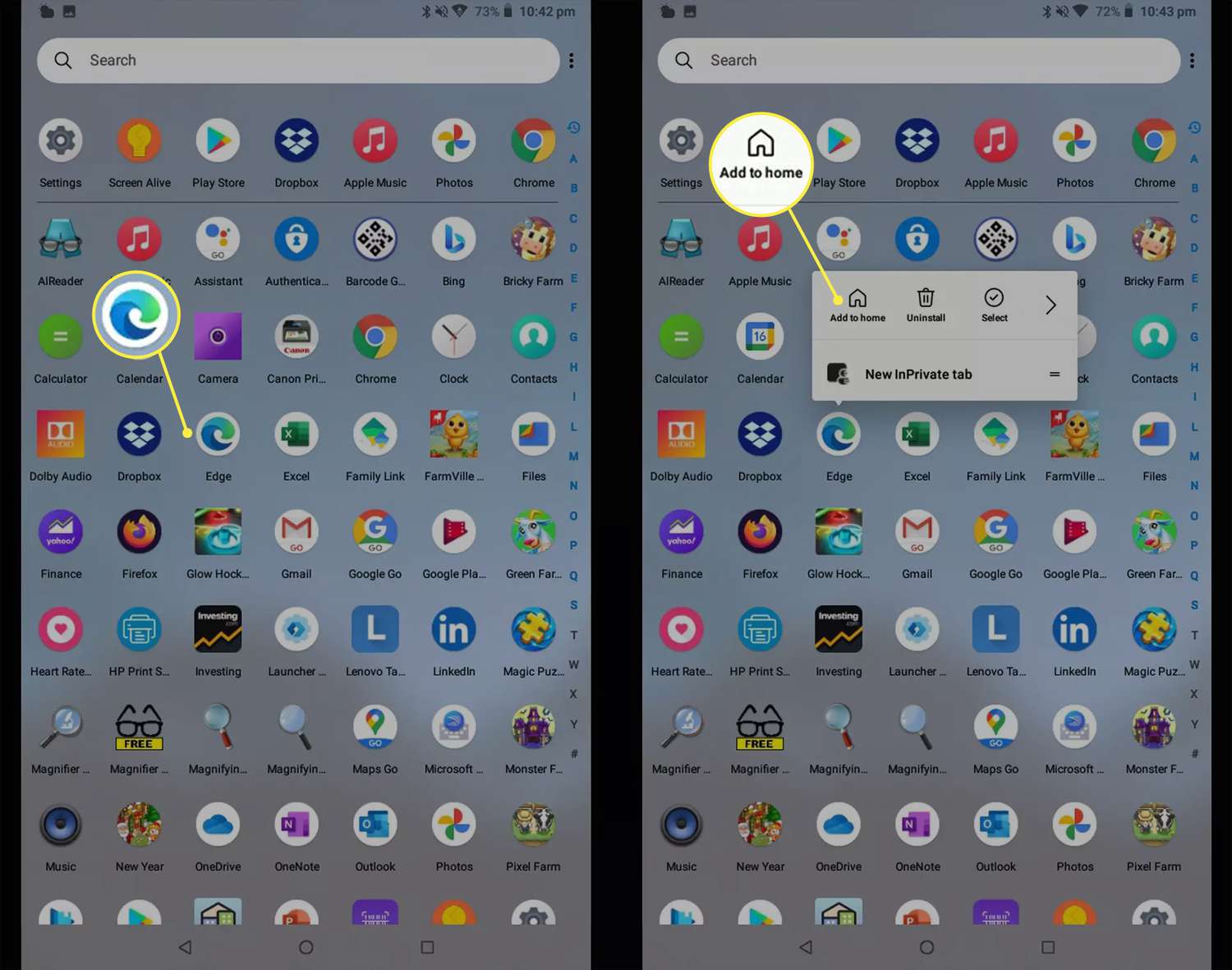Introduction
Samsung tablets are a popular choice for many users due to their sleek design, user-friendly interface, and versatile functionality. However, one of the most frustrating experiences that tablet owners can encounter is the constant barrage of pop-up advertisements. These intrusive and often irrelevant ads can disrupt your browsing experience, slow down your device, and even pose potential security risks. In this article, we will explore the importance of blocking pop-ups on Samsung tablets and provide you with effective methods to stop them.
Pop-ups can appear in various forms, including full-screen ads, banners, or even redirecting your browser to unwanted websites. They can be triggered by certain apps, infected websites, or even adware that may have unknowingly been installed on your device. Regardless of the source, it is crucial to address this issue to ensure a seamless and enjoyable tablet experience.
By taking the necessary steps to eliminate pop-ups on your Samsung tablet, you can enhance your productivity, protect your privacy, and prevent unnecessary distractions. In the following sections, we will explore some common causes of pop-ups on Samsung tablets and provide you with effective ways to stop them.
Importance of Blocking Pop-ups on Samsung Tablets
Blocking pop-ups on your Samsung tablet is crucial for several reasons. Firstly, it enhances your browsing experience by reducing interruptions and distractions. Pop-up ads can disrupt your flow while reading an article, watching a video, or browsing through your favorite websites. By blocking these intrusive ads, you can enjoy a smoother and uninterrupted browsing experience, allowing you to focus on the content you want to consume.
Moreover, blocking pop-ups can significantly improve the speed and performance of your Samsung tablet. Pop-up ads often contain rich media elements, such as images, videos, or animations, which require additional processing power and bandwidth to load. By preventing these ads from appearing, you can reduce the amount of data that needs to be transferred, resulting in a faster and more seamless browsing experience.
Another crucial reason to block pop-ups is to protect your privacy and security. Not all pop-up ads are harmless; some may contain malicious scripts or links that can lead to phishing websites or malware downloads. By blocking pop-ups, you can mitigate the risk of accidentally clicking on these dangerous ads and exposing your personal information or compromising the security of your tablet.
Furthermore, pop-up ads often tend to be irrelevant and unrelated to your interests. They can be a constant source of annoyance, especially when they appear repeatedly. By blocking pop-ups, you can customize your browsing experience and ensure that you only see ads that are relevant and personalized to your interests, thus making your online experience more enjoyable and streamlined.
Overall, blocking pop-ups on your Samsung tablet is essential for optimizing your browsing experience, improving device performance, safeguarding your privacy, and reducing distractions. In the next section, we will explore the common causes of pop-ups on Samsung tablets and provide you with effective ways to stop them.
Common Causes of Pop-ups on Samsung Tablets
Understanding the common causes of pop-ups on your Samsung tablet is the first step towards effectively stopping them. Here are some of the main culprits:
- Infected Apps: Some apps that you download from unofficial sources or third-party app stores may contain adware or malware. These malicious apps can trigger pop-up ads, even when you are not actively using them. It is crucial to only download apps from trusted sources such as the Google Play Store to minimize the risk of encountering these unwanted advertisements.
- Adware: Adware is software that is specifically designed to display advertisements on your device. It can often come bundled with free apps or downloaded unknowingly when visiting certain websites. Adware can be persistent and difficult to remove, as it may hide within system files or disguise itself as a legitimate application.
- Unwanted Browser Extensions: Some browser extensions or add-ons may inject pop-up ads into your browsing sessions. These extensions can be installed without your knowledge, often bundled with free software or obtained from untrustworthy sources. Checking your browser’s extension list and removing any unfamiliar or suspicious ones can help eliminate pop-ups.
- Clickjacking: Clickjacking is a technique used to trick users into clicking on a hidden or disguised element that triggers a pop-up advertisement. These malicious elements can be embedded within websites or disguised as a part of the page content. They can exploit vulnerabilities in your browser or operating system, leading to unwanted pop-up ads.
- Redirecting Websites: Some websites employ aggressive advertising tactics that redirect your browser to other pages, often containing pop-up ads. These websites typically rely on unethical practices to generate revenue and may compromise your browsing experience. Avoid visiting suspicious or untrustworthy websites to minimize the chances of encountering these annoyances.
By identifying the common causes of pop-ups on your Samsung tablet, you can take proactive measures to prevent them. In the following sections, we will explore effective ways to stop pop-ups on your Samsung tablet, allowing you to regain control over your browsing experience.
Effective Ways to Stop Pop-ups on Samsung Tablets
Dealing with pop-up ads on your Samsung tablet can be frustrating, but there are several effective methods to stop them. Here are some proven techniques:
- Updating Your Tablet’s Operating System: Keeping your tablet’s operating system up to date is crucial for security and overall performance. Manufacturers regularly release software updates that include bug fixes, security patches, and improvements in ad-blocking capabilities. To update your tablet, go to Settings > Software Update and follow the instructions to install the latest updates.
- Checking and Disabling Unwanted Apps: Some apps on your tablet may contain adware that triggers pop-up ads. To mitigate this, review your installed apps and uninstall any suspicious or unwanted ones. Go to Settings > Apps and tap on each app to see if it has any ad-related permissions or suspicious behavior. If necessary, select the app and tap Uninstall to remove it from your device.
- Enabling Pop-up Blocker in the Browser: Most popular browsers, such as Google Chrome or Samsung Internet, have built-in pop-up blockers. Ensure that the pop-up blocker feature is enabled in your browser settings. Open your browser, tap the menu icon (three dots), go to Settings, and locate the toggle switch for the pop-up blocker.
- Clearing Cache and Data from Browser Apps: Clearing the cache and data from your browser apps can help resolve issues related to pop-up ads. This process removes any stored data, including cookies and temporary files, that could be contributing to the appearance of pop-ups. To clear cache and data, go to Settings > Apps, select your browser app, and tap on Clear Cache and Clear Data.
- Using Ad-blocking Apps: There are various ad-blocking apps available for Samsung tablets that can effectively block pop-up ads system-wide. These apps work by filtering out unwanted advertisements from webpages and apps, providing a cleaner browsing experience. You can find and install ad-blocking apps from the Google Play Store to enhance your ad-blocking capabilities.
- Resetting Your Tablet to Factory Settings: If all other methods fail to stop persistent pop-ups, you can consider resetting your tablet to its factory settings. This will remove all installed apps and data from your device, effectively eliminating any adware or malicious software. However, this should be a last resort as it will also delete your personal files and settings. To reset your tablet, go to Settings > General Management > Reset > Factory Data Reset, and follow the on-screen instructions.
By utilizing these effective methods, you can regain control over the appearance of pop-up ads on your Samsung tablet. Experiment with these techniques to find the most suitable approach for your browsing habits and preferences.
Method 1: Updating Your Tablet’s Operating System
One of the most effective ways to stop pop-up ads on your Samsung tablet is by ensuring that your tablet’s operating system is up to date. Software updates often include bug fixes, security patches, and improvements in ad-blocking capabilities, keeping your device protected and optimized. Here’s how you can update your tablet’s operating system:
- Go to the Settings app on your Samsung tablet. You can usually find it on the home screen or in the app drawer.
- Scroll down and tap on “Software Update.” The exact location of this option may vary depending on your tablet model and Android version.
- Tap on “Download and Install” or a similar option. If an update is available, your tablet will automatically check and prompt you to download and install it. Make sure you have a stable internet connection to proceed.
- Follow the on-screen instructions to complete the update. Your tablet may need to restart during the process, so ensure that you have saved any important work and close any apps before proceeding.
Updating your tablet’s operating system not only keeps your device secure but also enhances its overall performance. Manufacturers regularly release updates to address software bugs and security vulnerabilities that can be exploited by pop-up ads. By installing the latest update, you can take advantage of the improved ad-blocking capabilities and stay one step ahead of intrusive advertisements.
In addition to regular system updates, it’s a good practice to enable automatic updates on your tablet. This will ensure that your device stays up to date with the latest software releases without manual intervention. To enable automatic updates, go to the Settings app, navigate to “Software Update,” and toggle on the “Auto-download updates” or a similar option.
Keep in mind that the availability of updates may vary depending on your tablet model, carrier, and region. It’s recommended to regularly check for updates and install them as soon as they become available to keep your tablet protected and enjoy an optimized browsing experience.
Method 2: Checking and Disabling Unwanted Apps
Unwanted apps on your Samsung tablet can be a common cause of pop-up ads. Some apps may contain adware or suspicious behavior that triggers intrusive advertisements even when you’re not using them. By checking and disabling these unwanted apps, you can effectively reduce the occurrence of pop-ups. Here’s how you can do it:
- Open the Settings app on your Samsung tablet. You can usually find it on the home screen or in the app drawer.
- Scroll down and tap on “Apps” or “Applications.” The exact name may vary depending on your tablet model and Android version.
- You’ll see a list of all the installed apps on your tablet. Browse through the list and look for any unfamiliar or suspicious apps that you don’t remember installing. Pay attention to apps that have a high number of advertisements or permissions that seem unnecessary for their functionality.
- Tap on an app to open its details page. Here, you can find information about the app, such as its size, permissions, and data usage.
- If you suspect an app to be the source of pop-up ads, scroll down on the app details page and tap on “Uninstall” or “Disable” (if available). Uninstalling the app will remove it completely from your tablet, while disabling it will prevent it from running and displaying ads.
- Repeat the process for any other unwanted apps that you come across in the list. Be cautious while uninstalling or disabling apps, as some system apps are necessary for the proper functioning of your tablet.
By regularly reviewing and removing unwanted apps, you can reduce the chances of encountering pop-up ads. It’s also a good practice to only download apps from trusted sources such as the Google Play Store. Apps from unofficial sources or third-party app stores may carry a higher risk of containing adware or malware.
If you’re unsure about an app or its functionality, you can research it online or read user reviews to gather more information. Additionally, consider checking the reviews and ratings of an app on the Google Play Store before installation, as users often share their experiences with ads and unwanted behavior in the reviews section.
Remember to periodically revisit the app list on your tablet to ensure that no unwanted apps have been installed without your knowledge. This proactive approach can significantly reduce the occurrence of pop-up ads and create a cleaner and safer environment for your browsing activities.
Method 3: Enabling Pop-up Blocker in the Browser
Most popular browsers, including Google Chrome and Samsung Internet, come equipped with built-in pop-up blockers. Enabling this feature can effectively suppress pop-up ads and create a more seamless browsing experience. Here’s how you can enable the pop-up blocker in your browser:
- Open your preferred browser on your Samsung tablet.
- Tap on the menu icon, usually located at the top-right corner of the browser window. The icon typically consists of three vertical dots or lines.
- From the menu, select “Settings” or a similar option.
- Scroll down or navigate to the “Advanced” section in the settings.
- Look for the option labeled “Site settings” or “Content settings.” Tap on it to access additional browser settings.
- In the Site settings or Content settings menu, locate the option for “Pop-ups” or “Block pop-ups.”
- Toggle the switch to enable the pop-up blocker. This action tells the browser to actively block any pop-up ads that attempt to appear while you’re browsing.
- You may also find additional options related to pop-ups, such as allowing pop-ups from specific websites or managing exceptions. Customize these settings according to your preferences.
Enabling the pop-up blocker in your browser significantly reduces the intrusion of pop-up ads during your browsing sessions. It’s important to note that some legitimate websites may use pop-ups to display important information or certain features. If you encounter issues with a trusted website because of the pop-up blocker, you can always disable it temporarily or add an exception for that specific website.
Regularly check and update your browser to ensure that you are using the latest version. Browser developers often make improvements and enhancements to their pop-up blocking capabilities, keeping you protected from the latest advertising techniques and unwanted pop-ups.
By taking advantage of the built-in pop-up blocker in your browser, you can have more control over the ads you encounter and enjoy a smoother and more enjoyable browsing experience on your Samsung tablet.
Method 4: Clearing Cache and Data from Browser Apps
Clearing the cache and data from your browser apps can help resolve issues related to pop-up ads on your Samsung tablet. Over time, browsing data such as cookies, temporary files, and cached images can accumulate and potentially contribute to the appearance of pop-ups. By clearing the cache and data, you can ensure a cleaner and smoother browsing experience. Here’s how you can clear the cache and data from your browser apps:
- Open the Settings app on your Samsung tablet.
- Scroll down and tap on “Apps” or “Applications.” The exact name may vary depending on your tablet model and Android version.
- Locate your preferred browser app from the list of installed apps. It may be called Google Chrome, Samsung Internet, or another browser app you have installed.
- Tap on the browser app to open its details page.
- On the app details page, you’ll find various options related to the app, such as storage usage, permissions, and notifications.
- Tap on “Storage” or a similar option. This will take you to a menu where you can manage the storage settings for the browser app.
- Tap on “Clear cache” to remove the temporary files and data stored by the browser app.
- Optionally, you can also tap on “Clear data” to delete all the app’s data, including login information, saved passwords, and browsing history. This step will reset the browser app to its default settings.
Clearing the cache and data from your browser app can help eliminate any stored information that might be causing pop-up ads to appear. It’s important to note that clearing the data will log you out from any websites you were signed into and remove any personalized settings. However, this step can be effective in resolving recurring pop-up issues.
Remember to repeat these steps for all the browser apps installed on your tablet to ensure a comprehensive cleanup. You may have multiple browser apps installed, and each app may store its own cache and data.
By regularly clearing the cache and data from your browser apps, you can keep your tablet optimized and minimize the chances of encountering pop-up ads. Additionally, consider adjusting the browser’s privacy and security settings to further enhance your browsing safety and block potential sources of pop-ups.
Method 5: Using Ad-blocking Apps
If you’re still experiencing persistent pop-up ads on your Samsung tablet, utilizing ad-blocking apps can be an effective solution. Ad-blocking apps are specially designed to filter out unwanted advertisements from webpages and apps, providing a cleaner and more enjoyable browsing experience. Here’s how you can use ad-blocking apps on your tablet:
- Open the Google Play Store on your Samsung tablet.
- In the search bar at the top, type “ad blocker” or “ad-blocking app” and tap the search icon.
- Browse through the list of ad-blocking apps that appear. Look for those with positive reviews and high ratings to ensure their effectiveness.
- Select an ad-blocking app that suits your needs and preferences. Tap on the app to open its details page.
- Read the app’s description, check the user reviews, and explore the features and options it offers. This will give you an idea of how well the app works and whether it provides customization options.
- Tap on the “Install” button to download and install the ad-blocking app on your tablet.
- Once the app is installed, open it and follow any initial setup or configuration instructions provided by the app. This may involve adjusting the ad-blocking settings or activating the app to function alongside your browser.
- Enable the ad-blocking feature within the app. This may involve toggling a switch or following specific instructions provided by the app.
- Now, when you browse websites or use apps on your tablet, the ad-blocking app will work in the background to block and remove pop-up ads, ensuring a cleaner and more streamlined browsing experience.
Ad-blocking apps can provide an effective solution to prevent pop-up ads from appearing on your Samsung tablet. They work by analyzing website content and removing or blocking advertisements from being displayed. Some ad-blocking apps also offer additional features, such as blocking tracking tools and improving overall webpage loading speed.
It’s important to note that while ad-blocking apps can significantly reduce the occurrence of pop-up ads, they may not be 100% foolproof. Some websites may employ techniques to bypass ad-blockers or display alternative forms of advertisements. Nonetheless, ad-blocking apps offer a practical and convenient way to reduce the annoyance and intrusion of pop-up ads during your browsing sessions.
Keep in mind that ad-blocking apps may affect the revenue streams for websites that rely on advertisements for monetization. Consider whitelisting or supporting websites that you trust and find valuable to contribute to their sustainability.
With the aid of ad-blocking apps, you can take control of the advertisements you encounter on your Samsung tablet and enjoy a more seamless and focused browsing experience.
Method 6: Resetting Your Tablet to Factory Settings
If all other methods fail to stop persistent pop-up ads on your Samsung tablet, you can consider resetting your device to its factory settings. This process will remove all installed apps, data, and settings from your tablet, effectively eliminating any adware or malicious software that may be causing the pop-up ads. Here’s how you can reset your tablet to factory settings:
- Before proceeding with the factory reset, ensure that you have backed up any important files, photos, or data that you want to keep. Resetting your tablet will erase all data on the device.
- Open the Settings app on your Samsung tablet.
- Scroll down and tap on “General Management.”
- Tap on “Reset” or a similar option.
- Select “Factory Data Reset” or “Reset settings.”
- Read the information provided on the screen to understand the implications of the reset. Tap on “Reset” or “Erase everything” to initiate the factory reset process.
- Follow the on-screen prompts and enter any necessary verification, such as your PIN or password, to confirm the action.
- Wait for the reset process to complete. Your tablet will restart, and the initial setup screen will appear.
- Go through the initial setup screens to configure your tablet with your preferences, including language, Wi-Fi, and Google account settings.
- Once the setup is complete, your tablet will be restored to its factory settings, free from any adware or unwanted apps.
Resetting your tablet to factory settings is an extreme measure and should only be considered as a last resort when all other methods have failed. It’s important to note that performing a factory reset will remove all data and apps from your tablet. Therefore, it’s crucial to back up your important files beforehand.
After the reset, take precautionary steps to prevent the reinstallation of unwanted apps or adware. Only download apps from trusted sources like the Google Play Store and be cautious when granting app permissions. Regularly update your tablet’s operating system and install security patches to safeguard against potential vulnerabilities.
Resetting your tablet can provide a clean slate, eliminating any pop-up ads or unwanted software that may have been causing disruptions. However, it requires careful consideration and should be done with caution to ensure the preservation of your important data and preferences.
Conclusion
Dealing with pop-up ads on your Samsung tablet can be frustrating, but by implementing the methods outlined in this article, you can effectively stop them and enjoy a seamless browsing experience. Whether it’s updating your tablet’s operating system, checking and disabling unwanted apps, enabling the pop-up blocker in your browser, clearing cache and data, using ad-blocking apps, or resetting your tablet to factory settings, each method offers a unique approach to tackle the issue of pop-up ads.
By keeping your tablet’s operating system up to date, you can ensure enhanced security and improved ad-blocking capabilities. Checking and disabling unwanted apps helps eliminate potential sources of pop-up ads, while enabling the pop-up blocker in your browser provides an additional layer of defense. Clearing cache and data from browser apps helps remove stored information that may be contributing to pop-up ads.
For a more comprehensive solution, utilizing ad-blocking apps can effectively block unwanted advertisements across webpages and apps. In case all other methods fail, resetting your tablet to factory settings can provide a fresh start and eliminate any adware or unwanted software.
Remember to practice safe browsing habits and download apps only from trusted sources to minimize the risk of encountering pop-up ads in the first place. It’s also essential to regularly update your tablet’s operating system, browser, and installed apps to benefit from the latest security patches and ad-blocking enhancements.
By employing these methods and taking a proactive approach, you can regain control over your Samsung tablet and enjoy a clutter-free, secure, and enjoyable browsing experience, free from the annoyance of pop-up ads.









